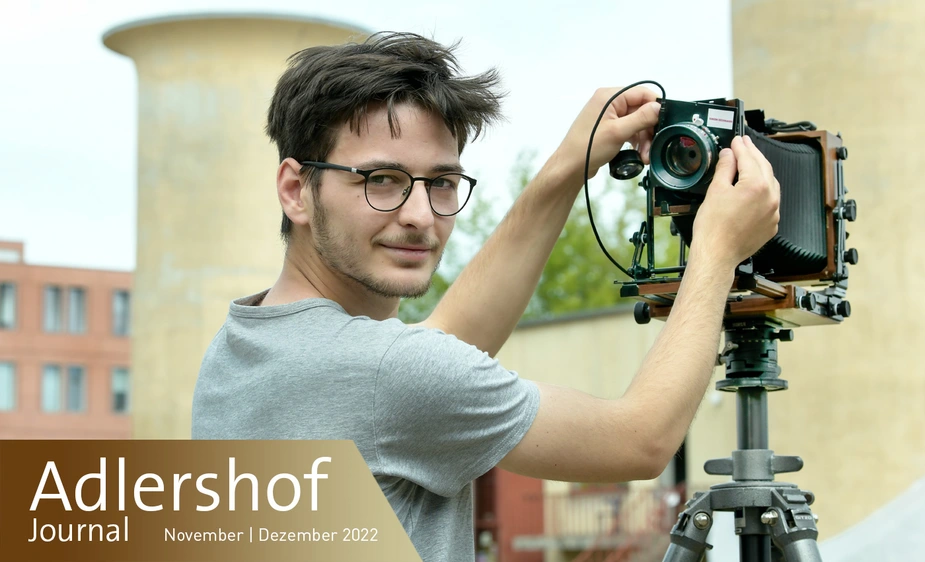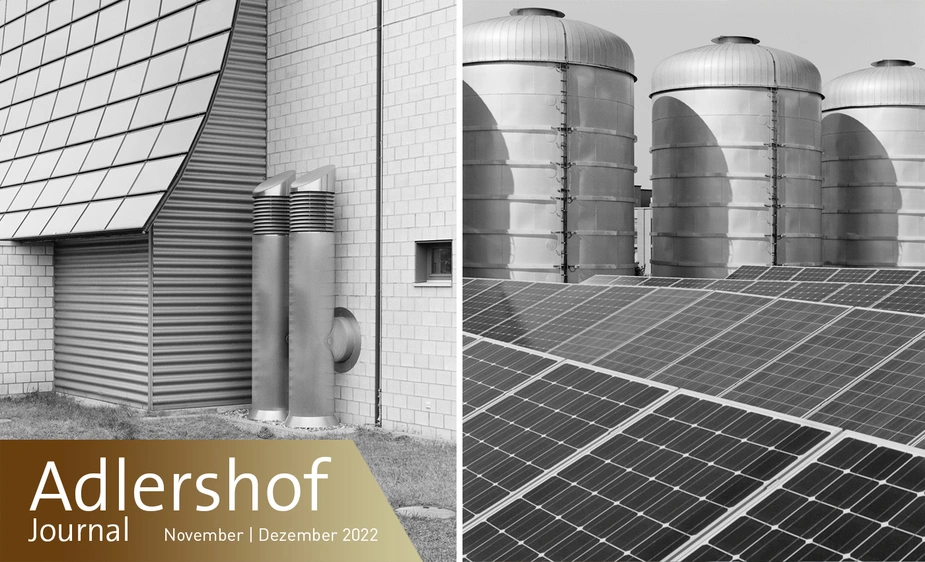“I like clear lines and shapes”
Simon Eichmann’s impressive photos of the Technology Park
For his final project after studying photography, Simon Eichmann chose subjects from the Technology Park Adlershof and baffled everybody with impressive photos with unusual perspectives.
Simon Eichmann discovered his fascination with Technology Park Adlershof at the tailspin wind canal, the “Trudelturm”. Built in the 1930s as a simulation facility for vertical airflows, often fatal for pilots, it is one of Berlin’s most unusual buildings. He is not the only one with love for the tower. Since Rammstein put the “stone egg” on the cover of their album “Zeit”, many more people are flocking to the land-marked monument. Eichmann saw the “Trudelturm” for the first time on a photography trip with his father. He has been back many times since. “This is much more than just a few buildings. It’s an intriguing place that brings together history and science,” says Eichmann. The Lette-Verein apprentice did everything he could to take the photos for his final project in Adlershof. “I send the operating company my concept, who supplied me with important contacts, and I sent endless emails out to all the companies,” says the 20-year-old. His persistence paid off. Starting in December 2021, Eichmann and his camera explored many different areas of science.
He looked into physics, visited a combined heat and power plant, the Leibniz Institute for Crystal Growth, and the company HPS Home Power Solutions AG, where he learned how to convert energy into hydrogen. “One of the highlights for me was Helmholtz Centre Berlin and their electron storage ring BESSY II, where bright X-ray flashes are used to study various samples of new agents and materials for solar hydrogen production.”
Eichmann’s photographs are inspired by Ludwig Windstosser, who was formative for the subjective photography movement in the 1950s. He focused on abstract black-and-white images and unusual perspectives. “I like clear lines and shapes. My subjects appear artificial and slightly surreal because I work with little spatial depth when photographing architecture.” Eichmann also found out that he can alter the overall perception by his choice of subject: “Laboratories are visually very restless places. By focusing on only one section, I block out a lot of the noise and bring order and peace to the picture.”
Eichmann uses a plate camera popular in the 1950s and 1960s. The camera takes analogue pictures that are burned on a photo cassette. One side of a cassette fits one photograph. For the photographer, the camera is an exercise in patience. “It takes a while until I have everything set up: the magnifying glass, the sharpness, and the picture itself. The lines help me see whether my picture is straight, and I can compose my image with precision. I don’t take many digital photos anymore.”
He completed the “Particles 52.4° 13.5” series in May 2022. Eichmann saw only a fraction of the 1,200 companies based in Adlershof. “That's why I call the series Particles, the numbers refer to the coordinates.”
Simon Eichmann took part in the annual “Outro” exhibition of the Lette-Verein Berlin the following month and was nominated for the “Lette Design Award by Schindler” almost in passing. He presented his Adlershof-themed photographs at WISTA’s annual reception in August. Until the end of the year, his works can be seen free of charge on weekdays across three stories at the Centre for Biotechnology and the Environment II, Magnusstr. 11.
After completing his training in the summer, Eichmann is now working part-time at a photo equipment rental company. In his spare time, he devotes himself to his own projects, mostly still lifes. Looking into the future, Eichmann is putting all his eggs in one basket: “After the last three years of assisting with many professional productions and taking lots of pictures myself, there is no Plan B for me. I’m sure it will work if I stick with it.”
Susanne Gietl for Adlershof Journal


